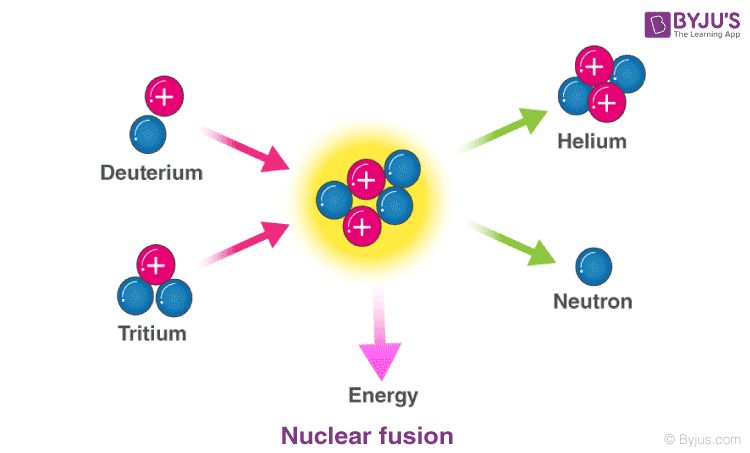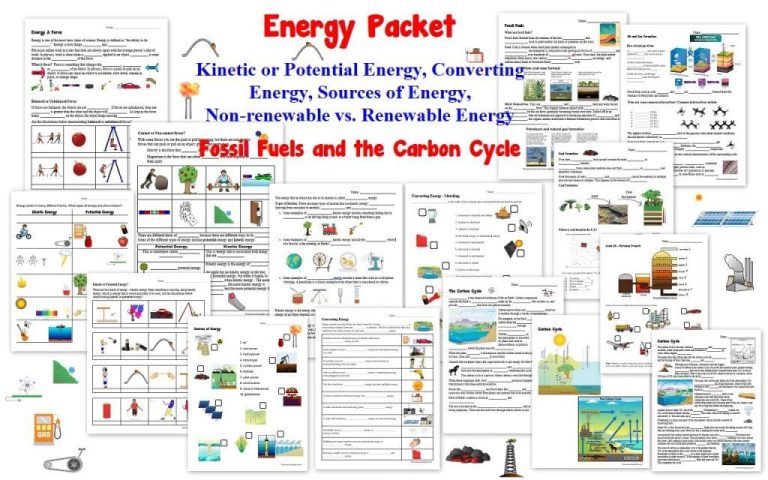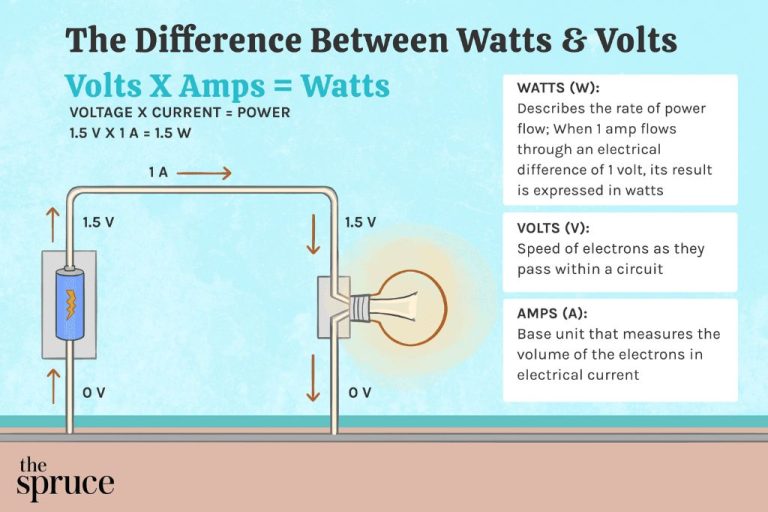What Types Of Energy Are Not Mechanical?
Mechanical energy is the energy associated with the movement or position of an object. This includes kinetic energy, which is the energy of motion, and potential energy, which is stored energy due to an object’s position.
However, there are many other important types of energy that are not mechanical in nature. Some of the main categories of non-mechanical energy include chemical energy, electrical energy, nuclear energy, electromagnetic radiation, thermal energy, and gravitational potential energy.
This article will provide an overview of these major forms of non-mechanical energy and explain what makes them distinct from mechanical energy. Key differences as well as everyday examples of each type of energy will be covered.
Chemical Energy
Chemical energy is the potential energy stored in the bonds between atoms and molecules. It is converted into thermal energy when a chemical reaction occurs. Common examples of stored chemical energy include:
- Food – The cells in our bodies break down glucose and other nutrients to release energy for cellular processes.
- Batteries – Chemical reactions between metals and electrolytes produce an electric current that can power devices.
- Fossil fuels like coal, oil, and natural gas – Combustion of these hydrocarbon fuels releases heat that can generate electricity.
- Explosives – Rapid oxidation reactions provide the explosive release of energy in materials like TNT and gunpowder.
- Rocket fuel – High energy fuels like liquid hydrogen and kerosene undergo combustion to propel rockets.
In each example, breaking atomic bonds in molecules releases energy in the form of heat and light. This chemical energy can be harnessed to do useful work.

Electrical Energy
Electrical energy involves the movement of electrons. Electrons create charge, which is a fundamental property of matter. The flow of electrons is what we call electricity. Batteries and outlets provide electrical energy by moving electrons from one terminal to another, creating an electrical current.
One example of electrical energy in nature is lightning. Lightning occurs when negative and positive charges in the atmosphere separate and build up. When the buildup becomes too great, lightning strikes as the negative and positive charges rapidly equalize. The giant spark of electrons moving creates the bright flash we see as lightning.
Other examples of electrical energy include static electricity, which builds up on materials through contact and separation, and the nerve impulses in our body, which are electrical signals sent between neurons. Overall, electricity and electronics play a central role in our modern lives.
Nuclear Energy
Nuclear energy comes from the splitting (fission) or merging (fusion) of atomic nuclei. The energy that holds the nucleus together is extremely strong, so when nuclei are split or merged, a tremendous amount of energy is released in the form of heat. This heat can then generate steam and electricity like in conventional power plants.
In nuclear fission, atoms like uranium or plutonium are split apart into lighter atoms, releasing energy. Nuclear power plants use fission to produce electricity. In nuclear fusion, lighter nuclei are combined together to make heavier nuclei, releasing even more energy in the process. Fusion is the process that powers stars like our sun, but scientists are still working on harnessing fusion to generate usable energy on Earth.
Radioactive materials like uranium contain unstable nuclei that decay over time, releasing subatomic particles and energy. This decay process generates the heat that is turned into electricity in nuclear power plants. While nuclear fission does not create any greenhouse gases or air pollution, the radioactive waste it generates must be carefully contained. Overall, nuclear energy has a very high energy density compared to other sources.
Electromagnetic Energy
Electromagnetic energy refers to energy that is carried by electromagnetic waves. Examples of electromagnetic waves include ultraviolet light, visible light (the light human eyes can detect), infrared radiation, microwaves, and radio waves. All of these waves are part of the electromagnetic spectrum.
Electromagnetic waves can transfer energy from one place to another without requiring direct contact between the source and receiver. They consist of oscillating electric and magnetic fields that propagate through space and carry energy. The frequency and wavelength determine the properties and behavior of the waves.
Some key points about electromagnetic energy:
- Electromagnetic waves can travel through vacuums unlike mechanical waves which require a medium to propagate.
- They travel at the speed of light which is approximately 3 x 10^8 meters per second.
- They exhibit properties of both electricity and magnetism.
- The electromagnetic spectrum consists of radio waves, microwaves, infrared, visible light, ultraviolet, x-rays, and gamma rays – arranged from low frequency to high frequency waves.
- Low frequency waves like radio have longer wavelengths but less energy. High frequency waves like gamma rays have shorter wavelengths but more energy.
- Different frequencies interact differently with matter. For example, radio waves pass through walls while x-rays are blocked.
In summary, electromagnetic energy is a powerful form of energy that surrounds us in our daily lives through light, radio/TV signals, microwaves and more. Understanding the electromagnetic spectrum allows us to harness these waves for human benefit.
Sound Energy
Sound energy is a type of mechanical energy that results from vibrating matter. It requires a medium like air, water or solids to travel through in the form of longitudinal waves. When an object vibrates, it causes the particles in the surrounding medium to vibrate, creating alternating regions of compression and rarefaction. The vibrations cause a wave of pressure disturbance that travels through the medium. The frequency of the wave determines the pitch, while the amplitude determines the volume.
As an example, when a guitar string is plucked it vibrates quickly back and forth. This vibration pushes and pulls on the surrounding air particles, creating a sound wave that travels outward. The compressions in the wave are the high-pressure peaks, while the rarefactions are the low-pressure valleys. When the sound wave reaches our ear drums it causes them to vibrate and sends signals to our brain that we interpret as sound.
Sound can only travel through matter. It cannot travel through empty space devoid of matter. This highlights the requirement for a medium for sound waves to travel. Sound waves can travel through any state of matter, including gases, liquids, solids and plasmas. The properties of the medium like density and temperature affect the speed and other characteristics of the sound wave.
Thermal/Heat Energy
Thermal energy, also known as heat energy, is the energy that comes from the motion of atoms and molecules in matter. All matter consists of tiny particles like atoms and molecules that are constantly vibrating and moving. The faster these particles move, the more thermal energy they have.
As an object gets warmer, the atoms and molecules move faster, colliding with each other more frequently. This increase in molecular motion corresponds to an increase in thermal energy. Heat always flows from matter at a higher temperature (more thermal energy) to matter at a lower temperature (less thermal energy).
Some examples of thermal energy in everyday life include:
- The warmth from sunlight, fire, or hot objects like stovetops and engines
- Heat radiating from your body
- Steam rising from a pot of boiling water
- Warmth provided by heaters and furnaces
Thermal energy is harnessed for heating homes, cooking food, generating electricity in power plants, and many other applications. It can also be dangerous in excess, like the extreme heat of wildfires or burns from hot surfaces. Overall, thermal energy is a fundamental form of energy critical to many aspects of everyday life.
Elastic Potential Energy
Elastic potential energy is the energy stored in elastic objects or materials as a result of deformation. It refers to the potential energy stored in stretched or compressed springs, rubber bands, or any other elastic material.
This type of energy results from forces that try to restore an elastic object back to its normal shape. For example, when you stretch a rubber band, you are doing work against the intermolecular forces in the rubber that try to maintain its original shape. This work gets stored in the rubber band as elastic potential energy.
The same thing happens when you compress a spring. The spring tries to return to its relaxed length, so when you compress it, you have to do work against its restorative force. This energy gets stored in the spring as elastic potential energy.
The amount of elastic potential energy stored in an object depends on how far it is deformed from its normal shape and the elastic properties of the material. The farther you stretch or compress an elastic object, the more elastic potential energy gets stored in it.
When you release the rubber band or spring, the stored elastic potential energy is converted into kinetic energy as the object returns rapidly to its original shape. This kinetic energy is what propels the rubber band when released or causes the spring to bounce up and down.
Elastic potential energy has many everyday and engineering applications. For example, it is used in trampolines, slingshots, catapults, and bows and arrows. The stretching of elastic materials in these devices stores energy that is converted to kinetic energy when released.
Gravitational Potential Energy
Gravitational potential energy is the energy stored in an object due to its position relative to the ground or other massive objects. The higher up an object is, the greater its gravitational potential energy. This energy comes from the gravitational pull between the object and the Earth (or other bodies). Some examples of gravitational potential energy include:
- A ball held up in the air has more gravitational potential energy than a ball sitting on the ground. As the ball is held higher, its potential energy increases.
- Water held behind a dam has gravitational potential energy that can be converted to electricity as it flows downhill through turbines.
- A skier at the top of a mountain has more gravitational potential energy than at the bottom. The skier converts this potential energy to kinetic energy as he/she descends.
- A space shuttle in orbit has gravitational potential energy due to its high altitude. As it descends back to Earth, this potential energy is converted to kinetic energy.
In summary, gravitational potential energy depends on the height of an object above the Earth or other large bodies. This stored energy can be converted into motion or electricity as the object descends or falls.
Conclusion
To summarize, the main types of energy that are not considered mechanical include chemical energy, electrical energy, nuclear energy, electromagnetic energy, sound energy, thermal/heat energy, elastic potential energy, and gravitational potential energy. All of these represent forms of energy that do not involve the motion or position of an object, which is the defining characteristic of mechanical energy. While mechanical energy involves kinetic energy from motion or potential energy from an object’s position, the types covered here rely on other phenomena like chemical reactions, electric charges, nuclear processes, electromagnetic waves, molecular vibrations, temperature differences, elastic deformations, and interactions between masses and gravitational fields. In physics, these are categorized as non-mechanical forms of energy.






